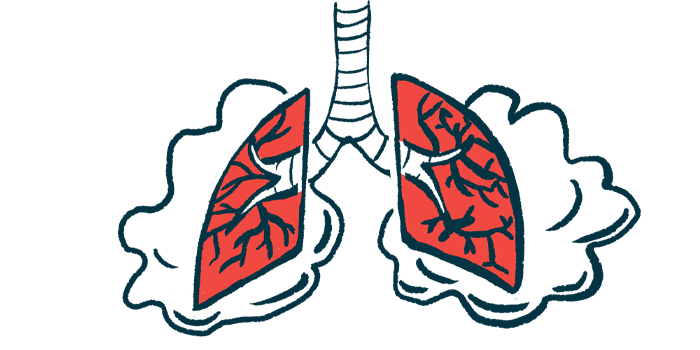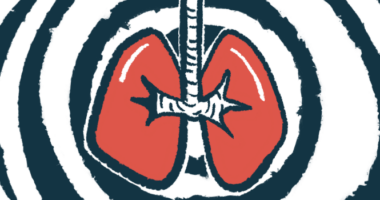Lung structure abnormalities seen on CT predict success with Trikafta
New findings explain wide variability in therapy's effects among CF patients

People with cystic fibrosis (CF) who have certain lung structure abnormalities — ones visible on CT scans — are more likely than those with other issues also seen via imaging to experience improvements in lung function after starting treatment with Trikafta.
That’s according to the results of a new analysis that used imaging scans and artificial intelligence (AI) tools to assess the impact of abnormalities in lung structure on Trikafta use. The researchers say these findings help explain the “large variability” in lung function gains seen among CF patients using the approved therapy.
Further, the tools used in this study “allow quantification of structural abnormalities over large numbers of patients, and could improve our understanding of the relative importance of different types of structural abnormalities” among individuals with CF, the team wrote.
The findings showed that adults with abnormal growths associated with lung inflammation were more likely to experience improvements in lung function with Trikafta — as were patients who were younger at the start of treatment.
Still, as their work involved only adults, the researchers noted that additional study is necessary to determine if these results would also be found in children.
The study, “Identification of structural predictors of lung function improvement in adults with cystic fibrosis treated with elexacaftor-tezacaftor-ivacaftor using deep-learning,” was published in the journal Diagnostic and Interventional Imaging by a team of researchers from France.
CF is caused by mutations in the gene that encodes the CFTR protein, which is critical for regulating mucus production. In people with CF, the CFTR protein doesn’t work properly or is entirely absent, leading to the production of thick, sticky mucus that builds up in the lungs and other organs.
Trikafta (elexacaftor/tezacaftor/ivacaftor) is a combination therapy containing three CFTR modulators, which are molecules that can boost the functionality of the defective CFTR protein in people with CF caused by certain mutations. Trikafta is widely approved to treat CF patients with eligible mutations.
Investigating the link between lung structure and lung function on Trikafta
Clinical trials and real-world data have shown that Trikafta treatment can improve lung function in CF patients. Data have also shown that Trikafta can lessen lung structure abnormalities visible on CT scans.
Reasoning that the improvements in lung function are likely related to changes in lung structures, this team of researchers set out to better assess this association following Trikafta treatment.
The scientists first used data from CT scans of 250 people with CF and other lung diseases to develop a deep learning model — a type of AI — that was able to identify seven types of lung structure abnormalities on CF scans with accuracy comparable to human experts.
“This tool allowed [researchers] to quantify the lesions on a large number of CTs and was found equally accurate [as] radiologists,” the investigators wrote.
The scientists then used the model to identify abnormalities in scans from 218 adults with CF who had imaging done before and after starting Trikafta.
Statistical models were then used to look for abnormalities significantly associated with changes in percent predicted forced expiratory volume in one second, known as ppFEV1. This is a standard measure of lung function based on how much air a person can blow out in a short breath.
After starting Trikafta, the median ppFEV1 improved from 60.5% to 78%. Most assessed lung structure abnormalities were also reduced following Trikafta treatment. These improvements were in line with previously reported data, the researchers said.
The team particularly highlighted that mucus plugging — where mucus builds up and blocks the airways — decreased more than 90% following Trikafta use. Statistical analyses showed that patients with mucus plugging were most likely to experience ppFEV1 improvements.
According to the team, “the extent of obstructive [mucus plugging] predicts functional gains under [Trikafta] in adults with cystic fibrosis.”
Given these findings, the researchers said that the therapy’s ability to clear mucus from the lungs is probably a key aspect of how it improves lung function.
Younger age at treatment start led to greater gains in lung function
The statistical models also showed that individuals with abnormal growths known as centrilobular nodules, which are tied to lung inflammation, were more likely to experience lung function improvements on Trikafta.
Improved lung function also was seen for patients who were younger, the researchers noted.
“The main predictors of the increase in ppFEV1 with [Trikafta] were a younger age at [treatment] initiation and a greater extent of mucus plugging and centrilobular nodules prior to [Trikafta] initiation,” the team concluded, adding that these findings “emphasize the added value of structural assessment in CF.”
The scientists noted that this study only involved adults. Thus, further work will be needed to see if the findings also apply to children with CF.









